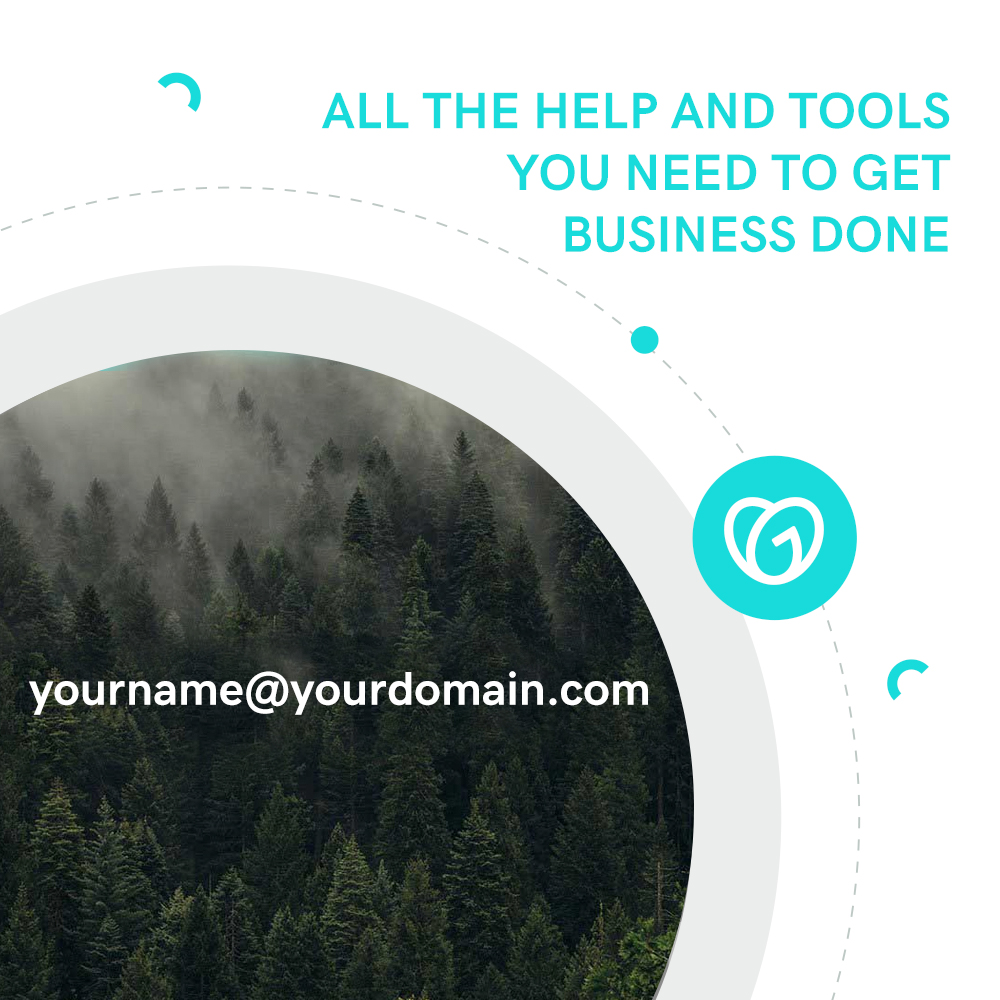Dropshipping in 2023 continues to grow as a popular business model for entrepreneurs to make money online. In this case, you might wonder - how do I start a dropshipping business?
With a dropshipping business, a store does not keep products in stock, but instead transfers customer orders and shipment details to a manufacturer or wholesaler, who then ships the goods directly to the customer. With the rise of e-commerce platforms and digital marketing tools, starting a dropshipping business has never been easier. However, it's important to understand the pros and cons of the model, and what it takes to set up and run a successful dropshipping operation.
In the following sections, we'll cover the steps you need to take to start your own dropshipping business in 2023, including:
- What is dropshipping?
- How does it work?
- Is dropshipping worth it?
- How hard is it to start a dropshipping business and where to find ones to buy?
- The 7 Steps to Start your Dropshipping Business 2023.
- Frequently asked questions (FAQ)
We will unpack the following topics: conducting market research, finding a niche, sourcing products, setting up your store, registering you store, marketing your brand, and measuring and optimizing your store.
By following these steps and staying informed about industry trends, you can be on your way to launching a successful dropshipping business.

What is dropshipping?
Dropshipping is a way for a retail store to fulfill orders without holding onto the physical products being sold.
Instead, when a store sells a product, it purchases the item from a third-party supplier and has it shipped directly to the customer. This means that the store doesn't have to handle the product itself, reducing costs and increasing flexibility. Dropshipping is often seen as a low-risk, low-investment way to start an e-commerce business and earn a passive income.
Think of dropshipping as being similar to a personal shopper. Just like a personal shopper takes your order and then goes to a store to buy and send the item to you, a dropshipping business takes an order from a customer, buys the product from a supplier, and then has it shipped directly to the customer. The only difference is that the personal shopper and the store are the same entity in dropshipping.
However, it's important to note that while dropshipping can be a flexible and low-cost way to start a business, it also has its challenges. Finding reliable dropshipping suppliers, managing inventory and shipping, and maintaining customer satisfaction can all be difficulties for dropshipping entrepreneurs. But with careful planning and a commitment to customer service, dropshipping can be a successful and fulfilling business model.
How does dropshipping work?
The dropshipping business model works by connecting the store owner, the customer, and the supplier through technology. When a customer places an order on the store's website, the store owner purchases the product from the supplier and passes along the customer's shipping information. The supplier then ships the product directly to the customer, bypassing the store owner.
Think of it as a relay race. The customer is the starting point, the store owner is the relay runner, and the supplier is the finish line. The store owner receives the customer's order, passes it along to the supplier, who then takes over and directly ships the product to the customer.
This process is made possible through the use of e-commerce platforms like the GoDaddy e-store and apps that automate much of the ordering, payment, and shipping processes. By using dropshipping technology, store owners can focus on marketing and promoting their products, while the supplier handles the rest.
Is dropshipping worth it?
Whether dropshipping is worth it depends on the individual's goals and circumstances. On one hand, dropshipping products allows for a low-investment and low-risk way to start if you’re an entrepreneur or a small business. It eliminates the need for large amounts of capital for inventory, and the ease of scaling makes it a flexible option for entrepreneurs.

Think of dropshipping as renting vs buying a home. Starting a traditional e-commerce business is like buying a house, as you need to invest a lot of money upfront for inventory to get it on a wholesale price. Dropshipping, on the other hand, is like renting a home - it requires a lower upfront investment, but also limits the amount of control and potential profits you have.
On the other hand, the low barriers to entry also means that there is a lot of dropshippers in the market. Finding a profitable niche, building a strong brand, and managing customer satisfaction can be challenging. Ultimately, it's up to the individual to weigh the potential benefits and drawbacks of dropshipping to determine if it's the right choice for them.
How hard it is to start a dropshipping business?
Starting a dropshipping business can be both technically straightforward and financially accessible, but also challenging in other aspects. From a technical standpoint, the setting up and integration of a dropshipping store are relatively simple tasks, and can be done quickly with the help of e-commerce platforms and apps.
From a financial perspective, starting a dropshipping business requires less capital than starting a traditional e-commerce business. However, it also means lower potential profits and less control over the supply chain.

Think of starting a dropshipping business like climbing a mountain. The technical aspects of setting up a store can be considered a relatively easy hike, while the financial and competitive aspects can be compared to reaching the summit. It requires strategy, effort, and perseverance to find a profitable niche, build a strong brand, and manage customer satisfaction.
Overall, starting a dropshipping business can be a low-risk and low-investment business idea for entrepreneurs and business owners, but it also requires hard work and careful planning to be successful.
How to Find a Dropshipping Business For Sale?
Finding a dropshipping business for sale can be a great option for entrepreneurs who want to get into the e-commerce industry without starting from scratch. There are many existing dropshipping businesses for sale that offer a proven business model, business structure, existing customer base, a technical know-how, and an established business name.
From a technical standpoint, finding a dropshipping business for sale is as simple as searching online marketplaces, such as Flippa or Exchange, or reaching out to business brokers.
From a financial perspective, buying an existing dropshipping business can be a cost-effective way to get started, as it often comes with a lower risk than starting from scratch. However, it's important to thoroughly research the business, including its financials, customer purchases, sales tax, and supply chain before making a purchase.
Think of buying a dropshipping company like buying a house. You can save time and effort by moving into a pre-existing, furnished home instead of building one from the ground up. But, just like buying a house, you need to do your due diligence and inspect the property thoroughly before making a decision.
Overall, buying a dropshipping business can be a smart and efficient way to get started in the industry, but it requires careful research and due diligence to ensure a successful investment.
Learn how to start your dropshipping business in 2023 in 7 Steps
Here are 7 steps to learn how to start dropshipping:
- Define your Niche & Target Audience
- Do a Comprehensive Market Research & Competition Analysis
- Choose your Supplier
- Build your eCommerce Store
- Register your Dropshipping Business
- Market your Dropshipping Store
- Measure & Optimize
Let’s discuss this in a step-by-step guide:
(1) Define your Niche & Target Audience.
Defining your niche and target audience is a crucial step in starting a successful dropshipping business. Think of it as finding the right "fit" for your store.
Imagine your dropshipping business as a store in a mall. Just like how each store caters to a specific type of shopper, your business should cater to a specific group of customers. This group is known as your target audience. By narrowing down your focus, you can tailor your product offerings and marketing efforts to better meet the needs and desires of your customers.
To find your niche, consider your personal interests and expertise, current market trends, and customer demand. This is called “customer persona“
For example, if you're passionate about fitness and healthy living, you may choose to focus on fitness equipment and wellness products. On the other hand, if you're tech-savvy, you may consider selling the latest gadgets and accessories.
Once you've defined your niche, research your target audience's demographics, behaviors, and pain points. This information will help you create a buyer persona, a fictional representation of your ideal customer, which will guide your business decisions.
Finding the right niche and target audience is key to the success of your dropshipping business.
By focusing on a specific group of customers, you can create a tailored shopping experience that appeals to their needs and desires.
(2) Do a Comprehensive Market Research & Competition Analysis
To successfully take an ecommerce website from a side hustle into proper full time job, it's crucial to do comprehensive business plan, market research, and competition analysis. It's like finding the perfect location for a restaurant - you want to make sure there's demand for what you're offering and that you're not opening up in an area that's already oversaturated with similar options.
Business planning: A successful business plan should outline the goals, target audience, marketing strategies, and financial projections for your store. Think of it like a map for your journey - having a plan in place can help you navigate the ups and downs and reach your destination faster. Just like a GPS, your plan should be updated regularly to ensure you stay on course. Start by researching your competitors and identifying your unique selling proposition, then budget such as startup costs for marketing and expenses. By taking the time to plan, you'll set your dropshipping store up for success.

Market research involves studying consumer behavior, evaluating potential product demand, and identifying potential suppliers. Tools like Google Trends, Keyword Planner, and consumer surveys can help you gain valuable insights into what people are searching for and what products are selling well.
Competition analysis, on the other hand, helps you understand who your competitors are, what they're offering, and what sets you apart. Use tools like SimilarWeb and SEMrush to analyze your competitors' online presence, see where their traffic is coming from, and identify areas where you can differentiate yourself.
Note: you can always find competitors selling the same product on ebay or Amazon or with a quick google search.
By conducting thorough market research and competition analysis, you'll be able to make informed decisions about what products to offer, what prices to set, and how to position your business for success.
Start by drafting a SWOT analysis for your business.
(3) Choose your suppliers
Choosing the right supplier is a critical step when starting a dropshipping business. A good supplier will have a proven track record of delivering high-quality products in a timely manner, while a bad supplier can harm your reputation and lead to customer complaints and returns.
To choose the right supplier, consider factors such as product quality, pricing, shipping time, and customer service. Research the suppliers online, read reviews and product descriptions, and compare prices. Reach out to the suppliers and ask questions about their product and services. Consider visiting the supplier's website and looking at the quality of the specific products they offer.
Another important factor to consider is the supplier's shipping policies. Make sure they offer fast and reliable shipping products and that they provide tracking information to customers. You should also consider their return policy and whether they offer a warranty or guarantee on their products.
Where to find suppliers:
Here’s a list of platforms to find suppliers and contact them from:
- AliExpress: A popular platform that offers a large selection of products at competitive prices. It is owned by Alibaba.
- Wholesale Central: A directory of wholesalers and suppliers where you can find products in various categories.
- Doba: A platform that connects dropshippers with suppliers and offers a variety of products for sale.
- SaleHoo: A directory of suppliers and wholesalers that offers a large selection of products across multiple categories.
- MegaGoods: A wholesaler that specializes in electronics and other gadgets.
- Global Sources: A platform that offers a large selection of products from Asian suppliers.
- DHgate: A B2B marketplace that offers a large selection of products from Chinese suppliers.
- TopTenWholesale: A directory of wholesalers and suppliers that offers a variety of products across multiple categories.
Finally, it's important to establish a good working relationship with your supplier. This can help ensure that you receive the best products, service, and customer support. Consider partnering with a supplier that offers drop shipping services and has experience working with online retailers. Good communication is key, so make sure to keep your supplier informed of any changes to your business and be responsive to their needs.
(4) Build your eCommerce Store.
Building an online store for your dropshipping business is a crucial step in launching your business. One of the simplest ways to set up a store is by using a website builder such as GoDaddy. With GoDaddy, you can easily create a professional-looking store even if you don't have any technical skills. Here's a brief overview of the steps involved in building a store with GoDaddy:
- Choose a website builder plan - the GoDaddy e-store offers several plans to choose from, so you can pick one that suits your needs and budget.
- Choose a template - Pick a template that fits the look and feel of your store. GoDaddy offers a variety of templates to choose from.
- Customize your store - Once you've chosen your template, you can customize it with your own images, own brand guidelines, and content.
- Add products - To start selling products, you'll need to add them to your store. You can add as many products as you like.
- Set up a payment processor: When it comes to setting up payment methods, there are many options available, such as credit card and debit card payments, PayPal, Fawry, and Paymob. Don’t lose your customers because you don’t offer the right payment method at the checkout.

- Launch your store - Once your store is set up and ready, you can launch it and start selling.
Easily create an online store that speaks to customers in their language, boosts your sales, manages your inventory and so much more.
Building your online store with GoDaddy is straightforward, and you can launch your business quickly and easily. With the right marketing and sales strategies in place, you can start earning a profit from your dropshipping business. Watch the below tutorial to learn how to build your store step by step:
(5) Register your Dropshipping Business
Starting a dropshipping business in the UAE can be a bit different than starting a business in other countries. The process usually involves obtaining a trade license, registering your business with the Department of Economic Development (DED), and opening a bank account.
To obtain a trade license, you need to have a physical office space, which can be rented or purchased, and must be located in a commercial area. The DED will then issue the trade license, which is valid for one year and must be renewed annually.
Once the trade license is obtained, you can register your business with the DED and obtain a Commercial Registration Certificate. This certificate confirms that your business is legally recognized in the UAE and can engage in commercial activities.
Finally, you'll need to open a bank account in the UAE. The account will be used to manage the financial aspects of your business, such as processing payments, receiving funds, and paying bills. Some banks may require additional documentation, such as a copy of your trade license and passport.
It's important to note that rules and regulations regarding business setup in the UAE can change, so it's recommended to seek professional advice from a lawyer or accountant.
(6) Market your Dropshipping Store
Marketing the dropshipping store is an important aspect of starting and growing a successful business. To market the store, you have a variety of options, each with its own advantages and disadvantages. Here are some effective marketing strategies you can consider:
- Social media marketing - marketing on Social media platforms like Facebook ads, Twitter, Tiktok, and Instagram provide an opportunity to reach a large number of potential customers and engage with them. You can use social media to promote your products, share updates, and respond to customer inquiries. You can also run social media advertising campaigns to target specific audiences and drive sales.
- Influencer marketing - One of the effective ways to market your dropshipping store is by partnering with influencers. Influencer marketing refers to the promotion of products or services through individuals who have a strong and loyal following on social media platforms like Instagram, TikTok, and YouTube. You can reach out to influencers who align with your target audience and ask them to promote your products to their followers.
- Content marketing involves creating and sharing valuable, relevant, and consistent content with your target audience to attract and retain customers. This can be in the form of blog posts, tutorials, infographics, videos, and podcasts. By providing valuable information, you can establish your brand as a trusted authority in the dropshipping niche and drive traffic to your website.
- Email marketing - Personalized email marketing involves sending promotional emails to your customers and subscribers. You can use email to promote new products, offer discounts, and provide helpful information about your products. You can segment your email list based on subscriber behavior and preferences to create personalized and relevant campaigns. It is vital that you know how to write professional emails before you send out your campaigns.

- Paid advertising - Paid advertising allows you to target specific audiences, reach new customers and increase your online visibility. This can be done through platforms like Google AdWords, Facebook, and Instagram. You can create ads for your products and target specific audiences based on factors like demographics, interests and behaviors.
- Search engine optimization (SEO) - Optimizing your store and its content for search engines to rank higher and attract organic traffic.
- Referral Marketing: Referral marketing involves incentivizing your current customers to refer new customers to your dropshipping store. You can offer discounts, free products, or other rewards to encourage referrals. This can be an effective way to drive new business and build brand loyalty among your existing customers.
Regardless of which strategies you choose, it's important to be consistent and continually track your marketing efforts to see what's working and what's not. Consider starting small and scaling up as you gain more confidence and experience.
Also, it's crucial to understand your target audience and their preferences in order to create effective marketing campaigns that resonate with them. As with any business, marketing requires effort and investment, but the reward can be a steady stream of customers and sales for your dropshipping store.
(7) Measure & Optimize
Once your dropshipping store is up and running, it is important to regularly measure and optimize its performance to ensure growth and success. Here are a few key areas to focus on:
- Sales: Track the number of sales you are making and compare them against your goals. If sales are low, identify areas for improvement such as product offerings, marketing strategies, or checkout process.
- Conversion rate: This refers to the percentage of visitors who make a purchase. If your conversion rate is low, consider making changes to your website design or customer service approach to improve the customer experience.
- Customer feedback: Regularly gather feedback from your customers to understand what they like and dislike about your store. Use this information to make improvements and enhance customer satisfaction.
- Product performance: Analyze the performance of each specific product in your store and make adjustments to your product offerings as needed. This may involve discontinuing low-performing products and adding new products that are in high demand.
- Advertising costs: Monitor your advertising costs and measure the return on investment (ROI) of your marketing campaigns. Make adjustments to your campaigns as needed to optimize ROI.
By measuring and optimizing these key areas, you can continuously improve the performance of your dropshipping store and ensure long-term success.
Frequently Asked Questions (FAQs) on how to start your dropshipping business:
How to start dropshipping: is it free to start?
Starting a dropshipping business can have costs associated with it, but it is generally considered a low-cost business model compared to traditional brick and mortar stores. Some costs to consider include setting up an online store, purchasing a domain name, paying for marketing and advertising, and subscription fees for e-commerce platforms. However, many e-commerce platforms, like GoDaddy, offer starter packages at low costs or even free trials. Additionally, there are ways to minimize costs by doing market research, choosing a reliable supplier, and effectively marketing your store. Overall, while there may be some costs involved, starting a dropshipping business can still be an affordable option for those looking to start an online business.
How many hours a week does dropshipping take?
Dropshipping can be as time-consuming or as passive as you make it. To start, you will likely spend a good amount of time researching products, setting up your online store, and marketing your business. However, once your store is up and running, the time commitment will depend on the volume of sales, the number of products you offer, and how much automation you set up. Some dropshippers spend only a few hours a week managing their store, while others may spend 40 or more hours per week. It really depends on your goals, and how much time and effort you are willing to invest. As a general rule, the more successful your business becomes, the more time you will need to invest in managing and growing it.
How to start dropshipping: what are the downside to dropshipping?
"Starting a dropshipping business may seem appealing, but it's important to understand the potential downsides as well. Here are a few to consider:
- Limited control over the customer experience: Since you're relying on a supplier to fulfill orders, you may not have full control over the quality and timing of the delivery. This can lead to customer dissatisfaction.
- Margin compression: Due to competition and the nature of the dropshipping model, profit margins can be slim.
- Shipping costs and tracking issues: Shipping costs can be higher and tracking information may not always be accurate, both of which can impact the customer experience.
- Product quality and authenticity: The quality of the products you offer is only as good as the supplier you choose. Research your suppliers carefully to ensure you're offering high-quality products.
- Branding challenges: Building a strong brand can be difficult in the dropshipping model, as you may not have full control over the customer experience.
It's important to weigh these potential downsides against the benefits of starting a dropshipping business before making a decision."
Do dropshippers make money?
Dropshipping can be a lucrative business model for entrepreneurs who successfully navigate the challenges and obstacles. Many dropshippers make money by finding the right niche, sourcing reliable suppliers, effectively marketing their store, and continuously optimizing their operations. However, starting a dropshipping business also involves upfront costs such as registering the business, setting up a website, and advertising the store. Like any other business, the success of a dropshipping store depends on various factors such as market demand, competition, and effective management. While it is possible to make money through dropshipping, it also requires hard work, dedication, and continuous learning and improvement.





